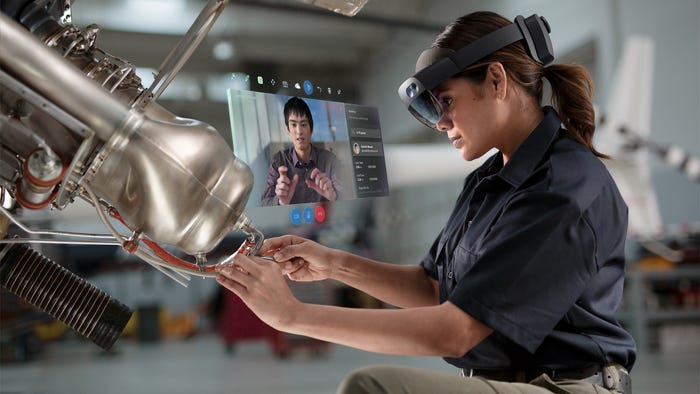Digital Technology Bolsters Manufacturing During Pandemic
Digital technology – including augmented reality – is helping manufacturers stay fully operational during COVID-19.
November 11, 2020

Many manufacturers are turning to digital technology to manage operations remotely and avoid partial or total shutdowns. Digitizing manufacturing processes allows workers to perform tasks off-site since technology can proactively identify and eliminate problems in the manufacturing process. This helps to reduce the time needed for repair and maintenance workers onsite, as well as eliminates downtime, particularly critical in the current financial environment.
Augmented reality (AR) and digital processes are taking a larger role in helping companies manage their manufacturing with fewer workers on site. Using digital technology, manufacturers are also learning that tools such as IoT can increase efficiency, optimize operations, and improve product quality while bolstering safety.

We reached out to Mike Cerilli, VP of commercial digital solutions at Ecolab, to offer some of the details of bringing AR and digital tools into the manufacturing process.
DN: How has augmented reality been used in manufacturing historically?
Mike Cerilli: AR is relatively nascent to manufacturing. While Boeing first used the technology as early as the 1990s, its adoption only picked up speed in the last decade as the technology matured. This reduced the cost, latency, and bulk of the devices, enabling more use cases.
Very similar to AR is mixed reality or MR. It has also seen large gains in manufacturing with its ability to bring together real-world and digital elements. In MR, you interact with and manipulate both physical and virtual items – with hand gestures and movements – and environments, using sensors and imaging technologies. This is in contrast to augmented reality, where the objects that reside in the real world are enhanced by computer-generated perceptual information.
DN: What are the benefits and challenges of using these technologies?
Mike Cerilli: The benefits of deploying these tech solutions are endless. Companies are able to better forecast critical issues in their operations, reduce downtime, increase efficiency, reduce employee risk of virus transmission, and free up employee time for higher-value tasks.
The challenge of using these tools is mainly in the implementation. It’s important to have a change management plan and shift company culture so that employees are willing to learn new tools and adapt their way of work. The good news is that we’re seeing more customers gain deeper understandings of these technologies and appreciate the immersive experience that they can provide.
DN: What types of applications see the most benefit from these digital technologies?
Mike Cerilli: We see these tools providing benefits in four key areas:
Training: Using MR can help shorten the learning curve for training new employees. For example, at one facility we needed to train a large number of employees on a complex system that includes many valves, pumps, chemistry, etc. We used HoloLens to train 60 employees on the system in one hour, which would have otherwise taken several weeks.
Predictive maintenance: We can use AI and IoT to identify when a process is breaking down or a device is acting unusual. This allows us to quickly schedule maintenance and ensure devices are fixed before a total failure, reducing downtime.
Process optimization: Using IoT, MR, and other digital tools, companies can gather insights needed to optimize processes, driving more ROI, and improving efficiency.
Remote access: IoT enables workers to get insight into plant and device performance remotely, eliminating the need to make on-site visits and reducing their risk of exposure to the virus. In some cases, this has made it possible for plants to continue operation where they would have needed to shut down. Outside the pandemic, remote access also provides benefits: The mixed reality program accelerates response time and may eliminate travel time and expenses. This technology also allows service specialists, engineers, and technicians to work on multiple projects at once and spend more time on difficult projects.
DN: What will the adoption and utilization of these tools and technologies look like long-term?
Mike Cerilli: IoT and digital tools aren’t just providing short-term cost savings or a way to access facilities during the pandemic. They are changing the way that companies operate, and this will continue long past the pandemic. We see COVID-19 as accelerating the adoption of these tools – what would have taken five years before will be accomplished in one.
In the future we expect to see companies embracing digital technology at a more accelerated rate; enabling Ecolab to increase our value delivery against customer’s operational and sustainability goals, reducing water consumption, energy consumption, and helping deliver against decarbonization goals.
Rob Spiegel has covered automation and control for 19 years, 17 of them for Design News. Other topics he has covered include supply chain technology, alternative energy, and cybersecurity. For 10 years, he was the owner and publisher of the food magazine Chile Pepper.
About the Author(s)
You May Also Like


.jpg?width=300&auto=webp&quality=80&disable=upscale)


